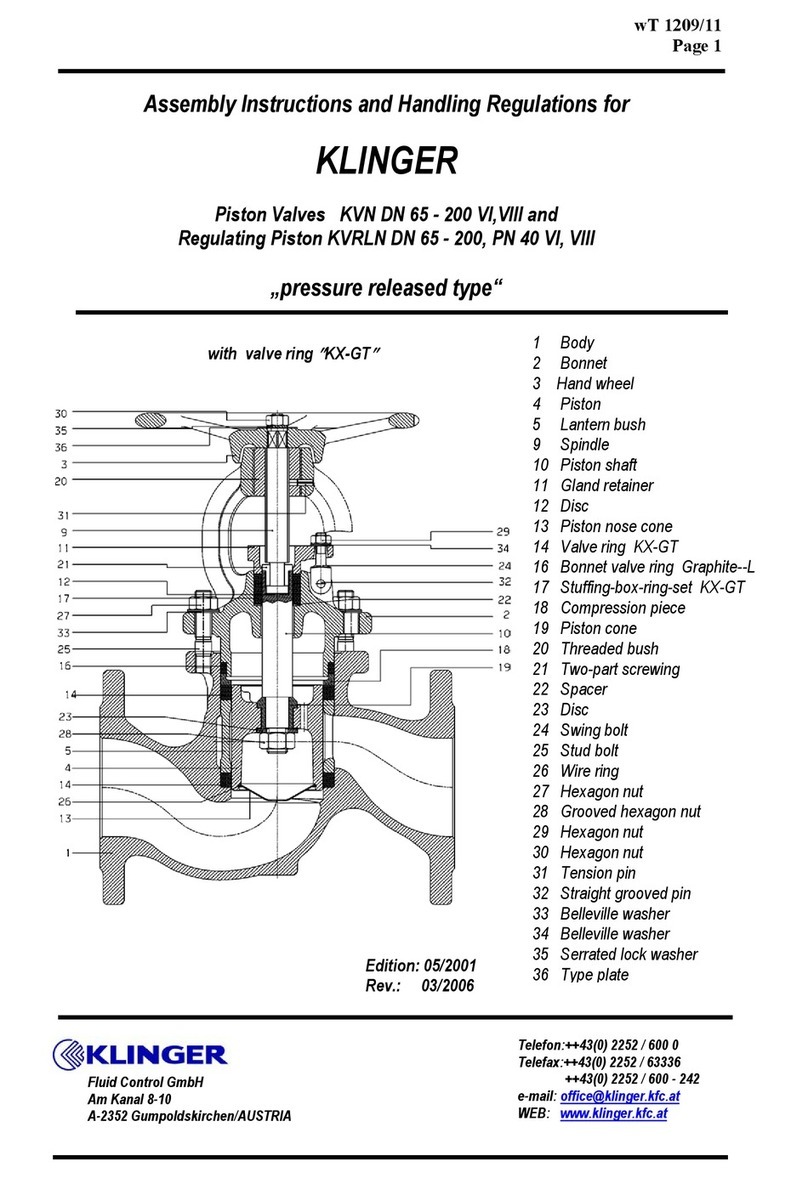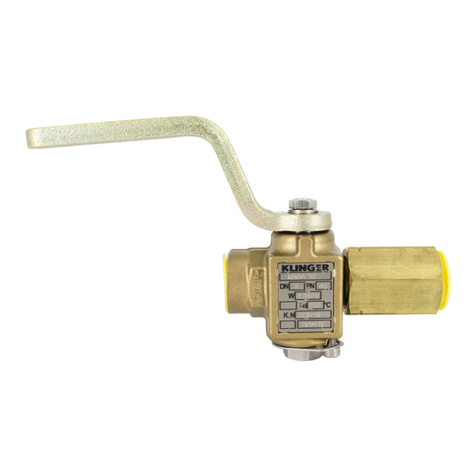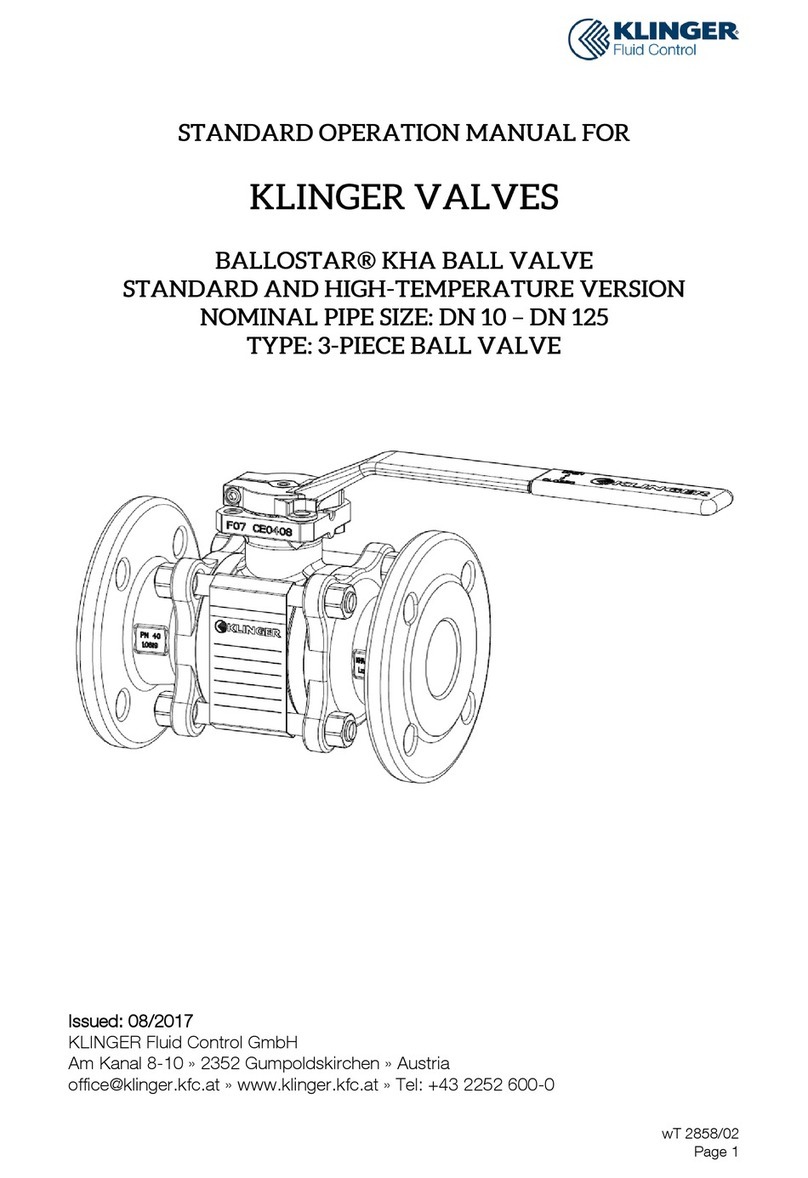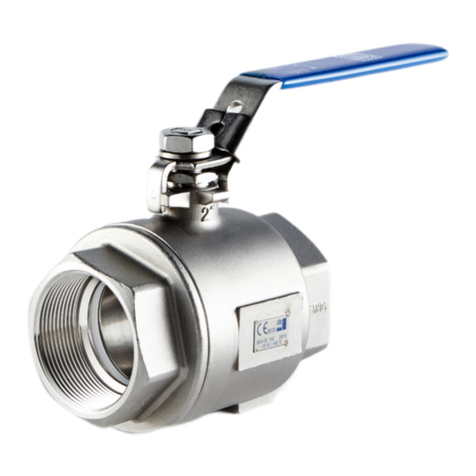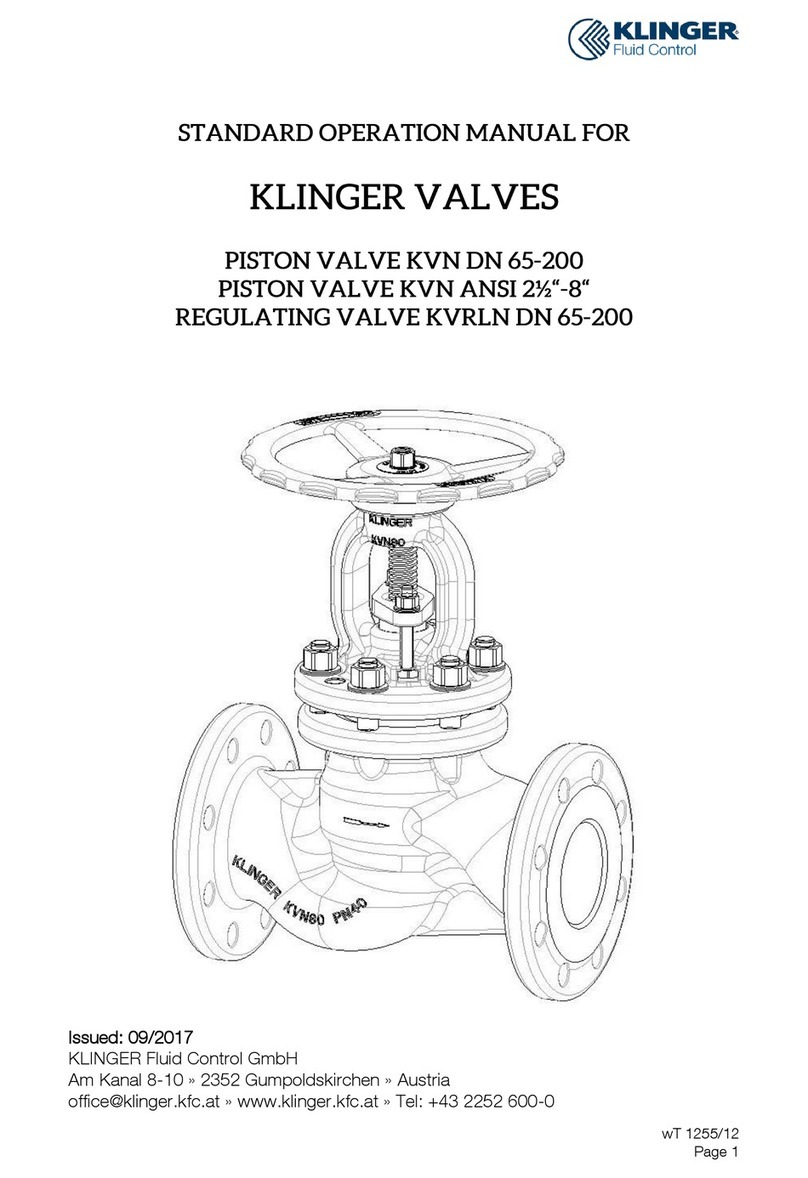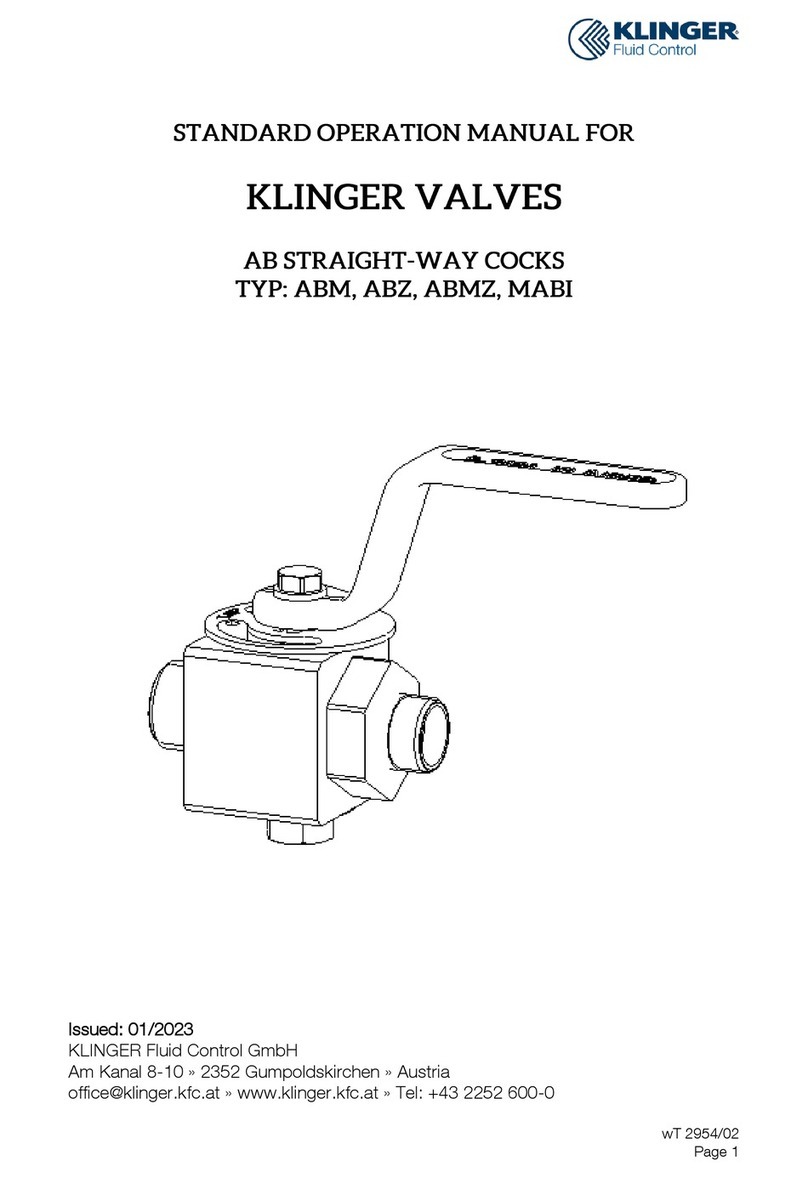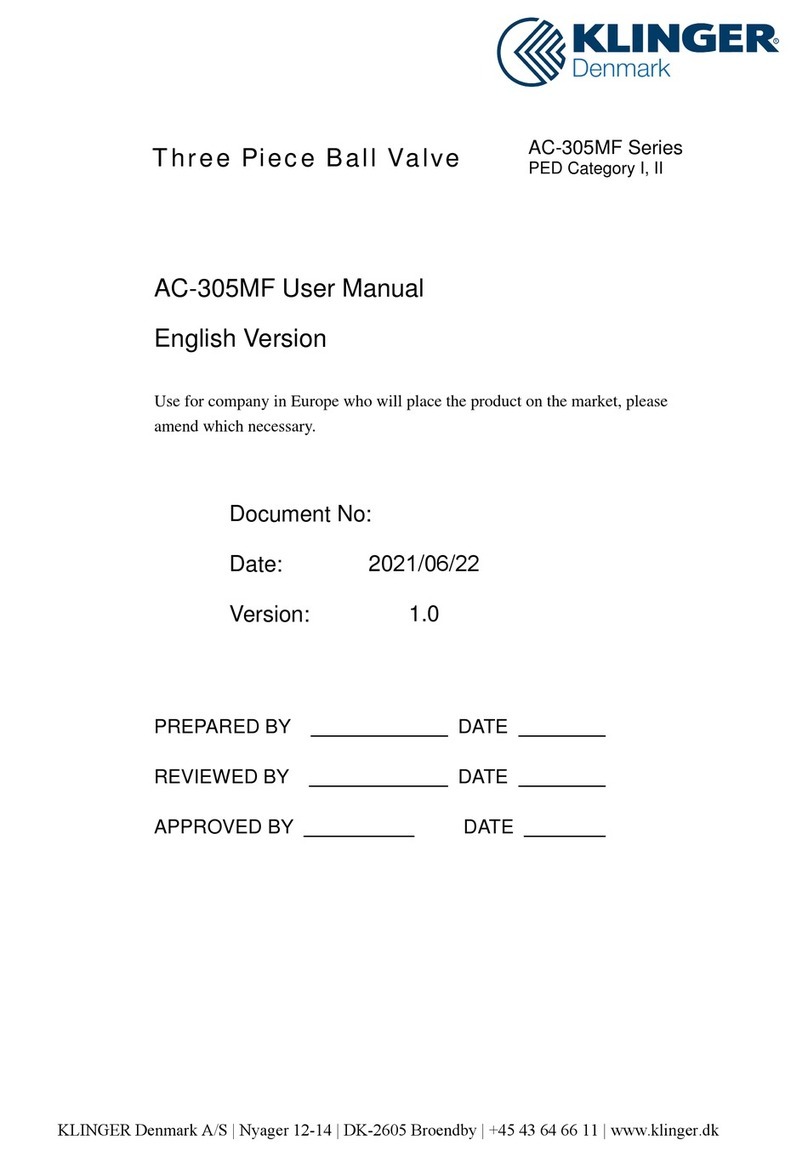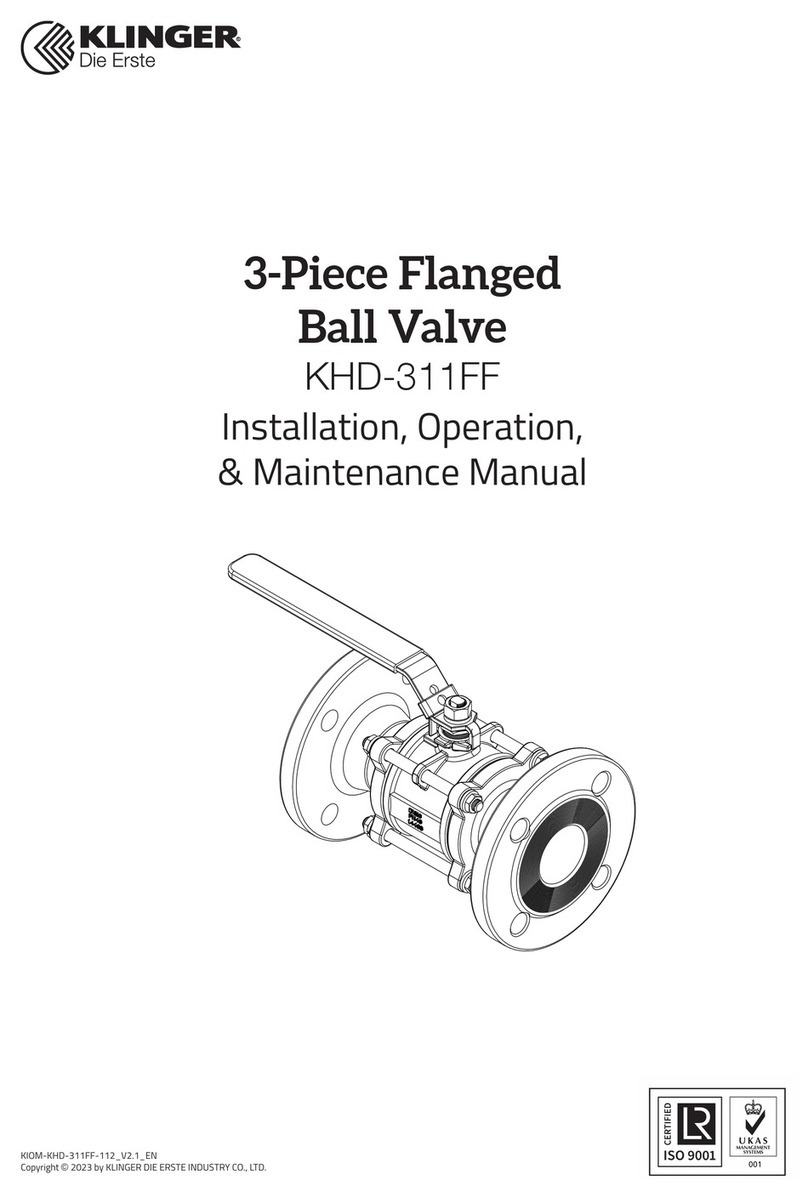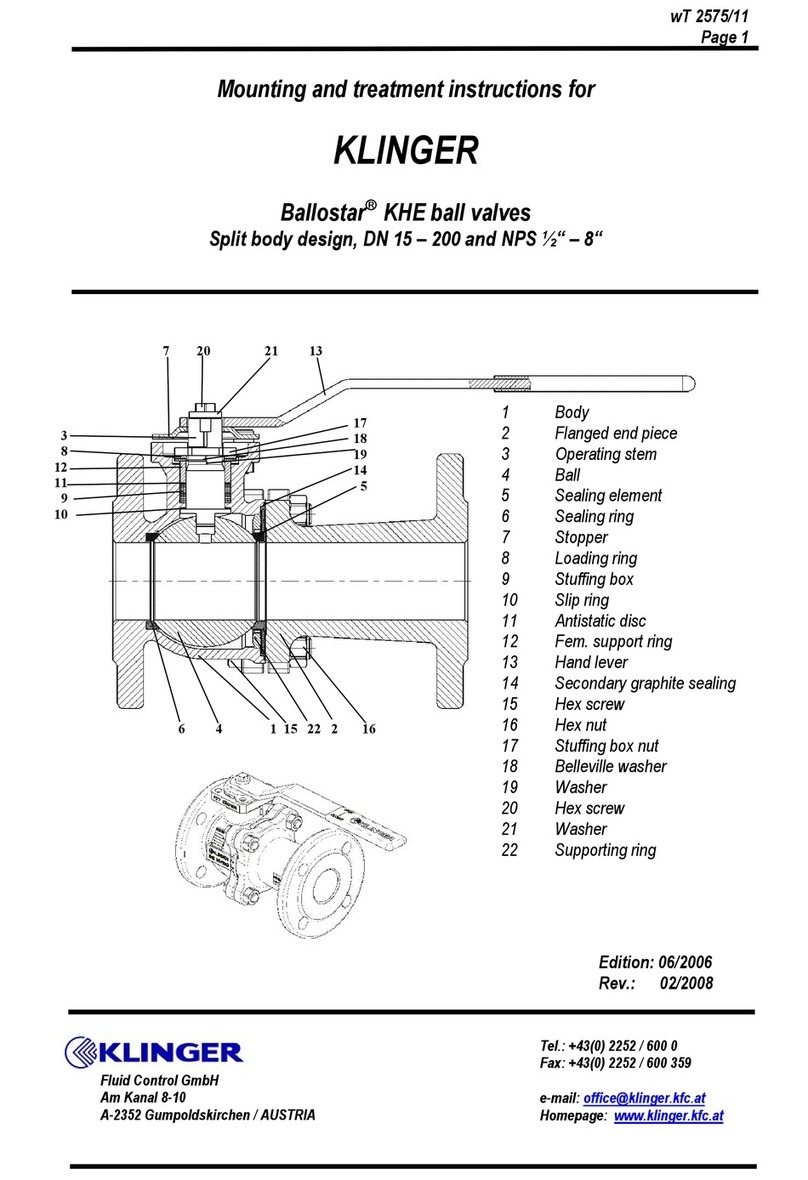wT 2860/02
Page 2
Contents
1Declaration of Conformity.............................................................................3
2Individual Parts Designation .........................................................................4
3Proper Use ..................................................................................................5
4Testing of KLINGER Valves..........................................................................5
5Labeling of the Valves ..................................................................................5
6Safety Instructions .......................................................................................6
6.1 General Notes on Safety.............................................................................. 6
6.2 Safety Instructions for Operators ................................................................. 6
6.3 Hazard Warnings......................................................................................... 7
7Technical Data.............................................................................................9
7.1 Material codes............................................................................................. 9
7.2 P/T Diagrams .............................................................................................. 9
7.3 Tightening Torques ................................................................................... 10
7.4 Table of Weights ....................................................................................... 11
8Transportation and Storage .......................................................................12
9Operating Principle ....................................................................................13
10 Mode of Operation.....................................................................................14
11 Installation and Putting into Service Regulations .........................................17
11.1 Welding Instructions.................................................................................. 17
12 Service and Maintenance...........................................................................18
12.1 Disassembly.............................................................................................. 18
12.1.1 Disassembly for Seal Exchange at the Operating Stem......................... 18
12.1.2 Disassembly of Individual Parts for Exchange of Sealing Elements ........ 19
12.1.3 Disassembly of the Sealing Element ..................................................... 21
12.2 Assembly .................................................................................................. 22
12.2.1 Standard Lubricants............................................................................. 22
12.2.2 Installation of the Sealing Element......................................................... 22
12.2.3 Assembly of the Individual Parts ........................................................... 23
12.2.4 Inspection of Axial Orientation of the Ball .............................................. 24
13 Actuator Mounting .....................................................................................25
13.1 Fitting the Actuator.................................................................................... 25
14 Spare Parts List .........................................................................................26
15 Disposal ....................................................................................................31
